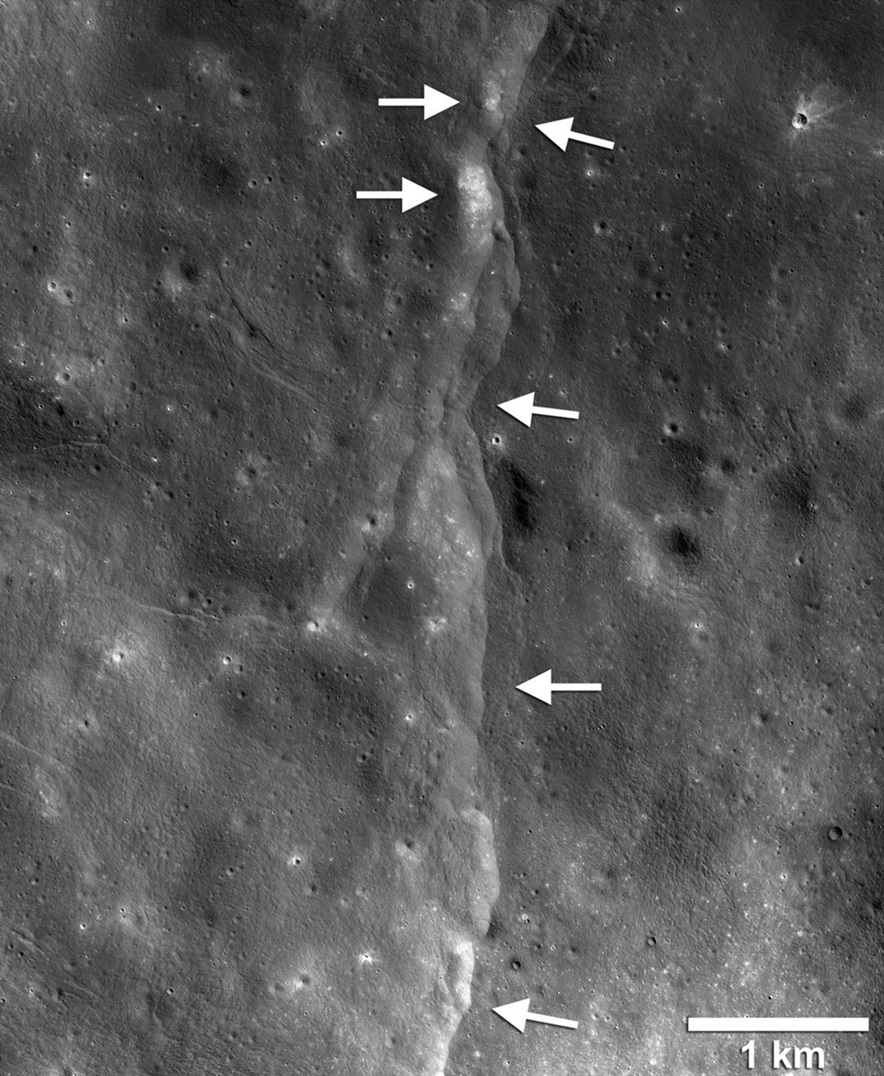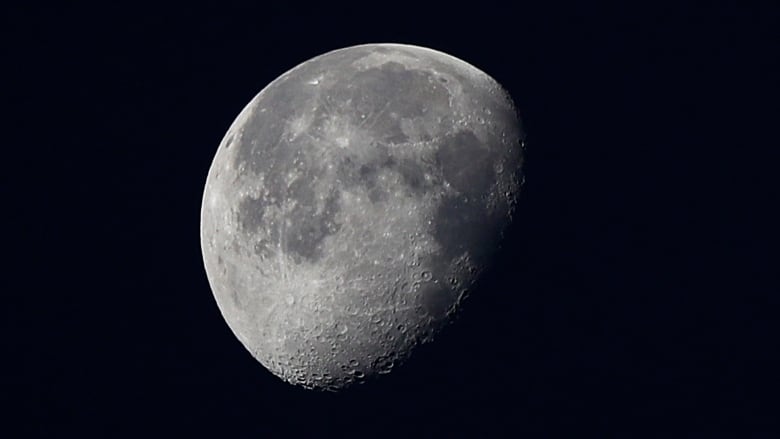Tue 14 May 2019:
By comparing lunar orbital imagery from NASA with seismic readings obtained nearly half a century ago from equipment left on the moon by the Apollo missions, researchers believe they’ve figured out what’s behind a pattern of mysterious moonquakes that have frustrated scientists for decades, seemingly originating from the upper few miles of the moon’s crust: our neighboring satellite, believed to be a cold lifeless rock, is actually geologically alive, just like Earth.
During the eight years the five Apollo seismometers functioned, they picked up 28 near-surface moonquakes measuring the Earth equivalent of between a 2 and 5 on the Moment Magnitude scale. By analyzing images from NASA’s Lunar Reconnaissance Orbiter (LRO) and using an earth-based algorithm to more accurately pinpoint the epicenters of those quakes, the researchers found eight of them happened within 19 miles of “fault scarps,” long clifflike formations crisscrossing the lunar terrain.
“It’s very likely that these eight quakes were produced by faults slipping as stress built up when the lunar crust was compressed by global contraction and tidal forces,” said Thomas Watters of the Smithsonian Institute, lead author of a paper on the findings published in Nature Geoscience on Monday. If so, “the Apollo seismometers recorded the shrinking moon and the moon is still tectonically active,” he said, calling the results “amazing.”

While other seismic disturbances measured by the Apollo-era seismometers could be attributed to Earth’s own gravity making itself felt through space – in the same way that the moon’s gravitational pull causes the oceans to rise and fall, so the Earth’s pull actually deforms the moon’s surface, stretching it into a slightly oblong shape before releasing it back into a sphere – asteroid impacts, or temperature shifts, these “shallow” moonquakes had previously frustrated all attempts to study them. They seemed to start in the upper few miles of the moon’s crust, yet accepted wisdom holds the moon is a big dead rock. Even Watters, who published a paper in 2010 analyzing the first NASA LRO images of the faults, believed the most recent scarps were “as young as a hundred million years.”
While the theory remains just a theory until scientists are able to conduct more detailed study on the moon, the researchers made certain that the lineup of quakes and faults was not due to coincidence, running 10,000 seismic event simulations in an effort to reproduce the pattern and coming up with just a 1 percent chance the lineups had been random.
“For me, these findings emphasize that we need to go back to the moon,” said researcher Nicholas Schmerr of the University of Maryland. “We learned a lot from the Apollo missions, but they really only scratched the surface. With a larger network of modern seismometers, we could make huge strides in our understanding of the moon’s geology.”





